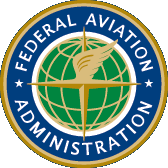Article courtesy of U.S. Department of Transportation
Federal Aviation Administration
Contact: Marcia Alexander-Adams Phone: (202) 267-3488
FAA Foreign Object Debris FACT SHEET
This article was written on November 15, 2013 and re-submitted here at fodprevention.com October 15, 2015
Background
FOD is any foreign object that does not belong on the runway, taxiway, or ramp area. FOD can cause damage to aircraft, and in rare instances, cause an accident. Typical FOD items are aircraft parts, tire fragments, mechanics’ tools, nails, luggage parts, broken pavement and stones.
Airports use a variety of tools to find and remove FOD, including visual inspections and the use of sweepers, vacuums and magnet bars to collect debris. Automatic systems provide instant notifications of debris by detecting and alerting the airport’s operations center. Most automatic systems also provide a video image of the FOD to help the airport operations center determine if it should remove the FOD immediately.
FOD Poses a Safety Hazard
FOD can be ingested in an aircraft engine, which can result in damage to the aircraft or cause an accident. It can damage or become lodged in aircraft operating mechanisms or cut aircraft tires. Boeing estimates that FOD causes an estimated $4 billion in damage to engines and aircraft taken out of service each year.
On July 25, 2000, an Air France Flight 4590 departing Charles de Gaulle International Airport ran over a piece of titanium debris from a Continental DC-10, shredding a tire and slamming rubber debris into the plane’s fuel tank. The subsequent leak and fire caused the Concorde to crash, killing 100 passengers, nine crewmembers, and four people on the ground.
The FAA requires airports with air carrier service or a Part 139 certification to conduct daily self-inspections. Advisory Circular (AC) "Airport Safety Self-Inspection" outlines the process airports should use to check and remove FOD from runways, taxiways, aprons, aircraft parking areas, and loading ramps.
The FAA’s Office of Airports encourages airport operators to implement a debris management program. The program helps airport operators prevent debris through awareness and training; detection through manual inspections and equipment; removal using equipment; and evaluation of the program by collecting data to look for ways to make improvements.
The FAA maintains a data base of incidents and accidents on airports that can be sorted by cause. However, most FOD incidents do not cause significant damage and are not submitted to the FAA.
Ongoing Research and Testing
For almost a decade, the FAA's Airport Safety Research and Development Section at the William J. Hughes Technical Center in New Jersey has been exploring technology to detect FOD on airports. Under this program, The FAA evaluated different technologies for a 12-month period, and produced an Advisory Circular “Airport Foreign Object Debris,” which provides performance specifications for an automatic FOD detection system. Airports can use this performance specification to competitively procure FOD systems.
To date, four manufacturers have developed different products:
- Boston, MA-based XSight’s product is FODetect and the system uses small detection units that contain both radar and camera units mounted near the runway edge next to the runway edge lights. The units scan the area and send an alarm message to the operator when FOD has been located. It also sends a video image to easily retrieve the debris. The system is installed at Boston Logan International Airport on Runway 9/27.
- San Diego, CA-based Trex Enterprise’s FODFinder is a mobile detection system that can be mounted to the roof of a vehicle. The system provides a radar and video image of the debris and once retrieved takes a photograph of the item and assigns a barcode for inventory purposes.
- UK-based QinetiQ's Tarsier Radar uses tower-mounted radar units that continuously scan pavement services and alarm and send a message identifying the location of the FOD.
- Singapore-based Stratech's iFerret system uses a high resolution camera to scan the runway. The software adapts to changing lighting and surface conditions and sends an alarm signal when debris is found.
The FAA currently has an agreement with Massport, the owner and operator of Boston Logan International Airport, using research and development (R&D) funds, as a one-time award, to assist with the system at Boston Logan. The FAA has no plans to use R&D money for other installations at this time. In December 2013, Boston will be the first airport in the nation to have FOD detection equipment installed on an entire runway. Runway 9/27 is the airport's busiest runway and it is currently using the XSight FODetect system. The total estimated cost to install the system on a full runway was $1.71 million. The FAA's share was $900,000.
The FAA also is working with Miami International Airport to install a FOD detection system on one runway at Miami in fiscal year 2014. The FAA will provide an Airport Improvement Program grant for 50 percent of the cost. The airport will seek competitive bids, so the manufacturer of that system has not been determined.
The FAA will continue to evaluate new detection systems as they are available. The FAA is working with Chicago O’Hare International Airport, through the Center of Excellence in Airport Technology, to study and characterize the FOD collected to better understand the sources of FOD on airports. The FAA hopes this study will help improve FOD management practices at large airports. The results of this two-year study will be published in 2014.
FOD Reporting
To report FOD items, use the FAA FOD Reporting Form. 

